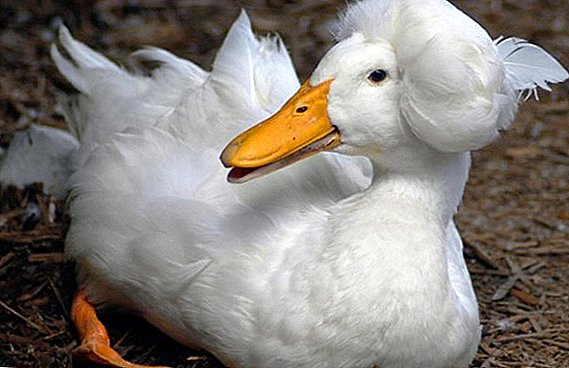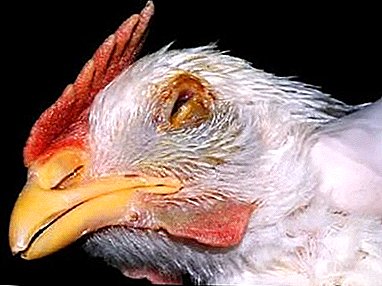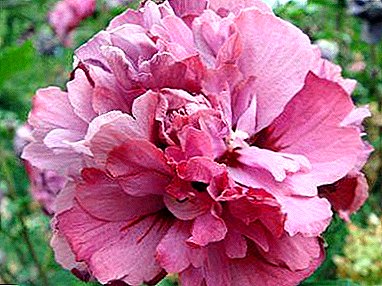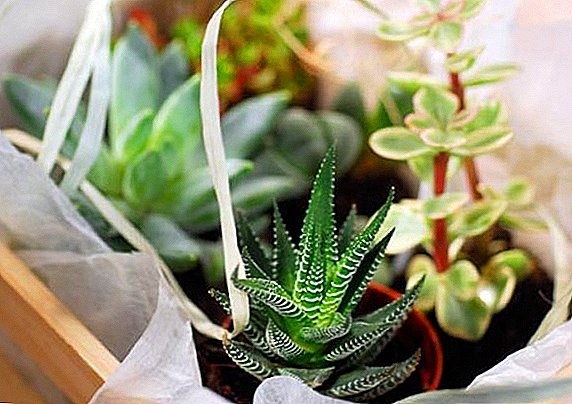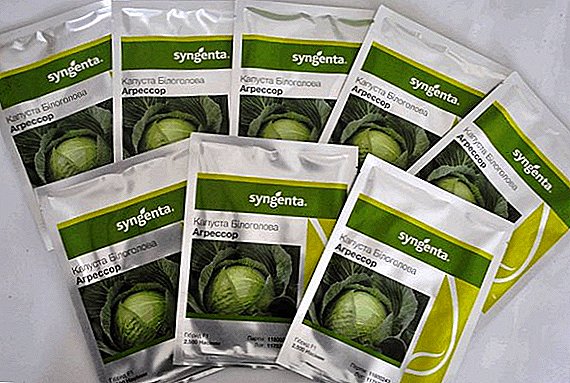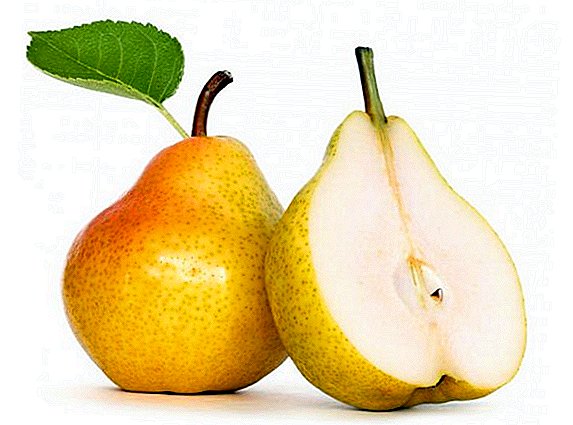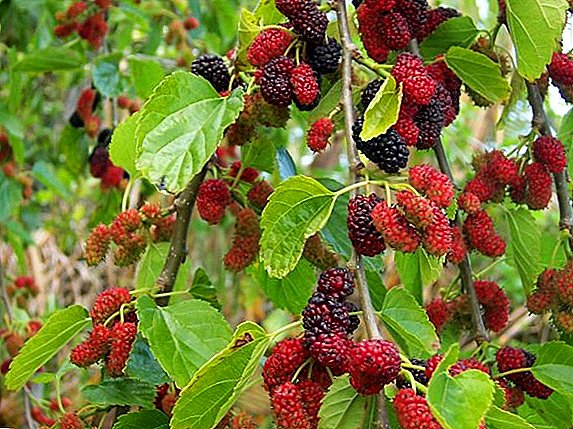 Probably everyone knows what tasty fruits mulberry gives, but many mistakenly believe that caring for it requires special skills. We will dispel this myth, because the mulberry can be successfully grown in our country, and there is nothing exotic about it.
Probably everyone knows what tasty fruits mulberry gives, but many mistakenly believe that caring for it requires special skills. We will dispel this myth, because the mulberry can be successfully grown in our country, and there is nothing exotic about it.
Necessary conditions for growing mulberries
Planting a mulberry and further caring for it are so simple that people call it a "tree for the lazy." Anyone can grow it in their own area, and without making much effort for this. To the environment it is very unpretentious. Even the mulberry, cultivation and care of which occurs in the middle lane, will produce a small but stable crop annually.
Did you know? The inhabitants of the east consider the mulberry tree a sacred tree. A table was placed under it, and all the family spent time with it. Also arranged under the mulberry bed. Mulberry tree charms are traditional charms of women of the East.
Lighting
 Plant mulberry should be in places with good lighting, where the north and east winds do not blow. If necessary, you can build an improvised defense against them.
Plant mulberry should be in places with good lighting, where the north and east winds do not blow. If necessary, you can build an improvised defense against them.
Temperature
The tree grows quickly, resistant to drought and does not suffer even from severe frosts. It can withstand cold to -30 ° C.
Important! During the growing season, the frozen annual shoots are quickly restored.
The soil
Mulberry can be planted in 90% of the soil. But, of course, it will bear good fruit only on fertile soils that are rich in nutrients and substances. It is strictly forbidden to plant these trees in wetlands and damp lowlands. The most suitable option would be soils with good drainage and high ability to retain moisture. When planting mulberry trees, take into account that they grow over time, so the distance between the seedlings should be left up to 6 m.
Did you know? Mulberry is called the “queen of berries”, and the tree itself has long been revered as “the tree of life”. According to the beliefs, the mulberry tree is endowed with forces that drive away evil spirits. Mulberry also symbolizes hard work and honor to parents.
How to plant a mulberry?
 Growing mulberries, like any other tree, begins with planting, which is best done in the middle of spring, namely in April, until sap flow begins. The second option is the middle of autumn before the beginning of the rainy season.
Growing mulberries, like any other tree, begins with planting, which is best done in the middle of spring, namely in April, until sap flow begins. The second option is the middle of autumn before the beginning of the rainy season.
Important! Gardeners with great experience recommend planting mulberries in the fall. Because a plant that survived the winter at an early age will live long.To choose the right place for planting a tree, it is necessary to take into account its preferences. The mulberry tree, as the mulberry is called, does not like excessive moisture, therefore, planting and further care of it must begin with the definition of a suitable soil. Groundwater deposits should not exceed one and a half meters.
Important! Male trees by nature are not able to bear fruit. But to find out the floor of your seedling will be possible only after five years. In order to avoid such incidents, we recommend purchasing seedlings that have already bearing fruit at least once.Planting pit need to prepare two weeks before planting a tree. Its size directly depends on the seedling root system. The tree should be placed in a pit not end-to-end, freely. The average size of the pit - about 50cm ³.
 If the soil in which the tree is planted is poor in nutrients, the pit should be made wider and deeper so that up to 7 kg of compost mixed with 100 grams of superphosphate can be placed at the bottom. Then fertilizers are covered with a layer of soil. Its thickness should be such that the roots of the plant are not in contact with fertilizers.
If the soil in which the tree is planted is poor in nutrients, the pit should be made wider and deeper so that up to 7 kg of compost mixed with 100 grams of superphosphate can be placed at the bottom. Then fertilizers are covered with a layer of soil. Its thickness should be such that the roots of the plant are not in contact with fertilizers.
Two weeks later, you can plant mulberry. Its roots need to straighten and prikopat, shaking the barrel. This is necessary in order to remove excess voids from the ground. When the roots along with the pit are completely filled, the soil should be compacted, and the seedling should be watered with 20 liters of water. When the water is fully absorbed, you need to mulch the tree trunk.
Important! If the tree is not sufficiently planted, before planting it is necessary to drive a support to the bottom of the pit. It will serve as a holder for a sapling. The tree must be tied to it. If clay soil is selected for planting a mulberry, then it is necessary to sketch broken bricks for drainage at the bottom of the pit.
As mentioned above, planting mulberries is carried out twice a year: in spring and autumn. Landing during these periods is almost identical. But usually in the autumn they dig up a trench for planting, lay nutrients in it and leave until spring. But in April, complete the landing.
Features tree care
 When the tree is planted, you need to know how to continue to care for the mulberry. The main thing is to carry out abundant watering of the tree during the period of active development, especially when buds are blooming. It is also important to feed the plant.
When the tree is planted, you need to know how to continue to care for the mulberry. The main thing is to carry out abundant watering of the tree during the period of active development, especially when buds are blooming. It is also important to feed the plant.
Trimming rules
Like any other tree, mulberry needs pruning. This is best done during periods of peace. The most painless pruning mulberry occurs in the spring. From the end of April to the beginning of May, when the buds have not yet blossomed, two types of pruning are performed: formative and rejuvenating. The third - sanitary - pruning is carried out in the autumn, when all the leaves have already fallen. But the air temperature should not be below -10 ° C. Different types of mulberry need to be cut differently. In the weeping mulberry, as a rule, the crown is thinned and the shoots and branches are shortened.
Important! Do not worry if the trimming is too strong. This type of mulberry very quickly returns to normal.In shtambovannoy mulberry form a crown. A long, bare trunk is left, and at the top is a dense sphere-like cap or cascade of branches. The most difficult to form a decorative mulberry tree. The trunk of a young tree is cleared from branches to a level of up to 1.5 m from the ground. You can give the crown to grow naturally. If you want to grow a dwarf tree, then cut the apical shoot at a height of about 1.5 m and form a skeleton of ten branches. Then you will only need to maintain the shape of the crown, cutting out unnecessary shoots. Penetrating branches do not need to touch, they simply enough to prop.
 When it comes time to prepare the mulberry for wintering, sanitary pruning is carried out. During this procedure, all diseased, dead and too weak branches and shoots are cut off. Sanitary pruning is usually not needed every year.
When it comes time to prepare the mulberry for wintering, sanitary pruning is carried out. During this procedure, all diseased, dead and too weak branches and shoots are cut off. Sanitary pruning is usually not needed every year.
Soil care
In order for the mulberry to hurt less and not be overpowered by pests, the tree trunk circle is treated with fungicides and insecticides for preventive purposes. It is better to do this at the beginning of April, while the buds have not yet awakened, and in October, at the end of the vegetative period. A good cure for diseases and pests is Nitrafen.
In the spring, it is better to process the wood and add seven percent urea to the soil. It will destroy all the pathogens and insect larvae that lay in the ground and in the mulberry bark. Also, the plant will be fertilized with nitrogen fertilizer, which is so necessary mulberry in this season.
In order for the mulberry to adapt to severe frosts, it needs to be watered from spring to mid-summer, only when the weather is dry. After watering should stop. If spring is rich in rain, then it is not needed. At the same time, the mulberry tree needs to be fed. In early spring, fertilizers with the nitrogen component should be added to the soil, and in the summer - with potash and phosphate.
How to prepare mulberry for winter?
 A mulberry is prepared for wintering in the middle of autumn, bending the branches to the ground. This procedure will not cause difficulties, since the young mulberry is quite flexible. But since the mulberry grows large enough, it is better to place the skeletal branches horizontally in the future, and bend only the young branches.
A mulberry is prepared for wintering in the middle of autumn, bending the branches to the ground. This procedure will not cause difficulties, since the young mulberry is quite flexible. But since the mulberry grows large enough, it is better to place the skeletal branches horizontally in the future, and bend only the young branches.
The first three years, it is desirable to wrap the trunk and the main branches covering material in several layers. It depends on the severity of winter frosts. Then you need to throw it on the stanants, spreading out poison under it for winter rodents, which can greatly harm the tree. To prevent the wind from tearing down the sheeting, you need to press it down with something heavy, for example, with pipes, boards or bricks. It is necessary to remove shelter from a mulberry in May when spring night frosts come to an end.
If you do not take into account the bending in of the young branches and the manipulation with a protective coating, then the care of the mulberry tree and its preparation for wintering is no different from the usual agrotechnics of apple trees.
Did you know? There is one beautiful legend about the beginning of the manufacture of silk associated with the mulberry tree. Princess Si Ling Shi was resting under a large silk tree when a cocoon fell into her cup of tea. In the hot drink, he blew shiny threads with mods. So China has found one of the main secrets: a small inconspicuous silkworm caterpillar that lives on mulberry is a source of valuable material from which it is possible to make almost invaluable fabrics.
When and how to harvest?
 The mulberry gives the first fruits already in the third year. Only berries are small. They become larger after another five to six years. But there can accelerate this process. In the spring you need to plant a seedling uterine tree. Harvesting mulberries is the greatest pleasure, because you won't have to climb a tree. When the berries ripen, they fall down themselves. On the ground, under a tree, you only need to lay a thick cloth, for example, spunbond. Mulberries are very juicy and sweet, they can reach 5 cm in length. It all depends on the variety.
The mulberry gives the first fruits already in the third year. Only berries are small. They become larger after another five to six years. But there can accelerate this process. In the spring you need to plant a seedling uterine tree. Harvesting mulberries is the greatest pleasure, because you won't have to climb a tree. When the berries ripen, they fall down themselves. On the ground, under a tree, you only need to lay a thick cloth, for example, spunbond. Mulberries are very juicy and sweet, they can reach 5 cm in length. It all depends on the variety.
Mulberry breeding
The mulberry tree multiplies both by seed and vegetatively.
Seeds
The multiplication of mulberry seeds is the easiest way for all types of this tree. You just need to take a handful of berries of the selected variety, put in a container and put in the sun to wander. Then in the water you need to well re-seed and drain the water with empty shells. Then again fill with water and pass through a strainer with a fine mesh. Then wipe again and rinse. Repeat until only pure seeds remain without pulp.
After they should be well dried and put into a paper bag and stored in a dry place until the beginning of spring. 45 days before sowing, moistened seeds should be placed on a shelf under the freezer for stratification or kept in water for three days. It is necessary to seed mulberry seeds to a depth of 1 cm in the most light place. It is often necessary to water the future mulberry, but not to flood it.
 You should also make sure that the young plant does not ruin the spring frosts. The first shoots need to be protected from direct exposure to UV rays. Thick plantings should be thinned in the phase of the fifth leaf. Bad ones are left on the ground to grow until the age of two years. Signs of the plant mother during reproduction by seeds are not transmitted. Such seedlings are used for grafting varietal mulberry.
You should also make sure that the young plant does not ruin the spring frosts. The first shoots need to be protected from direct exposure to UV rays. Thick plantings should be thinned in the phase of the fifth leaf. Bad ones are left on the ground to grow until the age of two years. Signs of the plant mother during reproduction by seeds are not transmitted. Such seedlings are used for grafting varietal mulberry.
Did you know? The appearance of paper in China also contributed to mulberry. It is his bast, which is located under the bark, was used to create paper.
Cuttings
How else does the mulberry breed? The best method of breeding in the summer is cutting. In the beginning of summer, cuttings with two or three buds are cut from a healthy shoot of this year. Lower leaves need to be removed, and on the rest, leave half of the plates so that the cutting further grows and develops.
You need to plant cuttings in a greenhouse, you can even make it improvised, under a translucent film to a depth of 3 cm. There are conditions in which cuttings root well. They will need moderate watering, frequent airing of the room and fertilizing with mineral fertilizers. The fact that the stalk is rooted can be understood in a month, when new shoots appear. These seedlings are exactly the mother tree.
Inoculation
 Mulberry is grafted by almost all known methods. The easiest and, most importantly, successful is copulation. The mulberry can be planted indoors in the winter or with the onset of early spring. Those cuttings that were grafted before sap flow are taken root faster.
Mulberry is grafted by almost all known methods. The easiest and, most importantly, successful is copulation. The mulberry can be planted indoors in the winter or with the onset of early spring. Those cuttings that were grafted before sap flow are taken root faster.
A simple copulation represents the same oblique cuts on the graft and the rootstock so that the cambial layers fit together more clearly. Cuts are made between the kidneys. When the cuts are aligned, the junction should be tightly covered with a soft plastic bandage.
Important! Do not allow offsets. In this case, the probability of accretion is significantly reduced.Improved copulation with the tongue differs from the simple additional application of parallel serifs, which when joining one another. This provides a strong mechanical bond between tissues. It is necessary to retreat a third of the length of the cutting from the end of the cut of the stock down. On the graft, the incision is done upwards and is carried out up to half of the oblique cut. As a result, peculiar "tongues" are formed on both cuttings, with the help of which they are more closely combined with each other.
Layering
 As the otvodka used lower branch. It bends down and fixed on the surface of the soil, then sprinkled with earth. For rooting to occur better, the branch must be broken at the fold or the ring of bark removed. With this technique, the formation of roots is stimulated. The procedure should be carried out in the spring, and by the fall roots will appear on the layers.
As the otvodka used lower branch. It bends down and fixed on the surface of the soil, then sprinkled with earth. For rooting to occur better, the branch must be broken at the fold or the ring of bark removed. With this technique, the formation of roots is stimulated. The procedure should be carried out in the spring, and by the fall roots will appear on the layers.
Did you know? The oldest mulberry in Ukraine is the one that grows on the territory of the National Botanical Garden named after Grishko. Her age is about 500 years. According to legend, it was planted by pilgrim monks from seeds that were brought from Central Asia. They also think that it is this tree that is considered the mother of all Ukrainian mulberry trees. Kobzar himself made several sketches of this tree.Remember that planting several mulberry trees, you will provide a whole generation of berries. After all, mulberry, depending on the variety, can live for hundreds of years.


